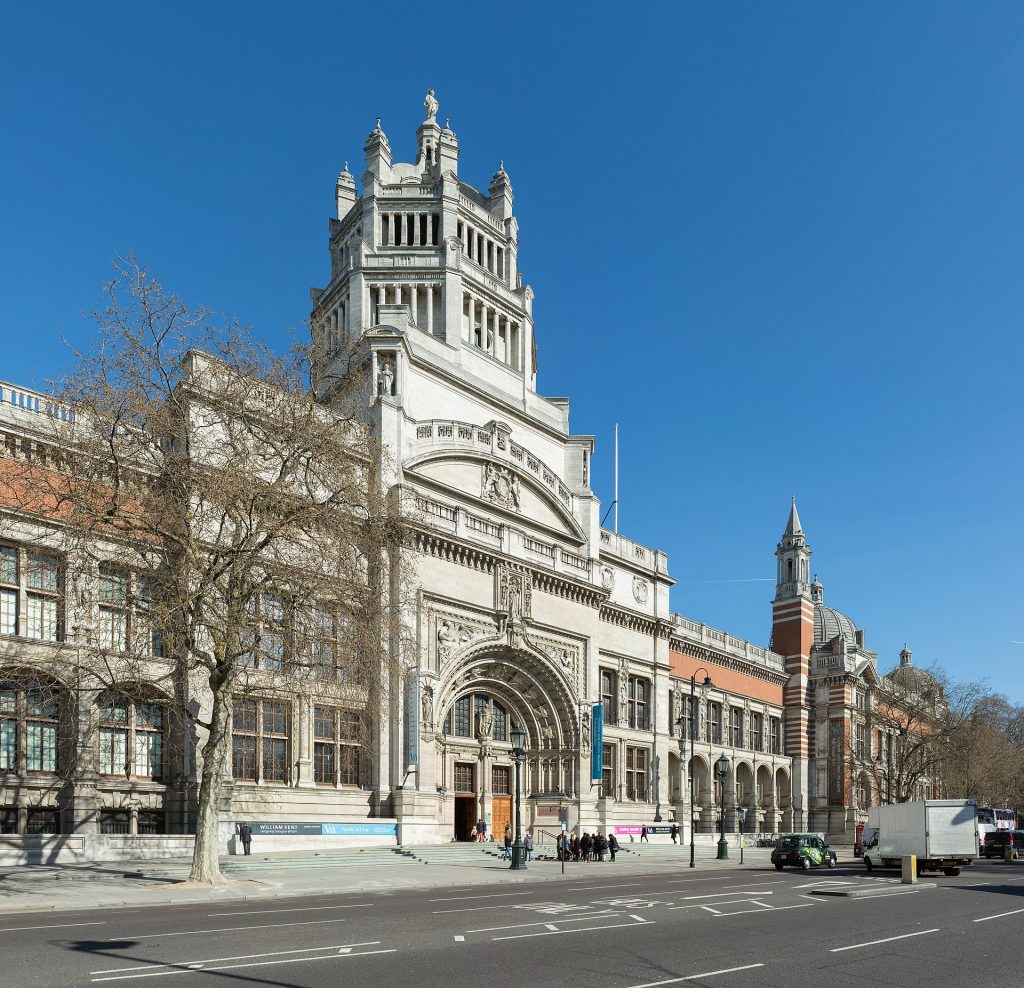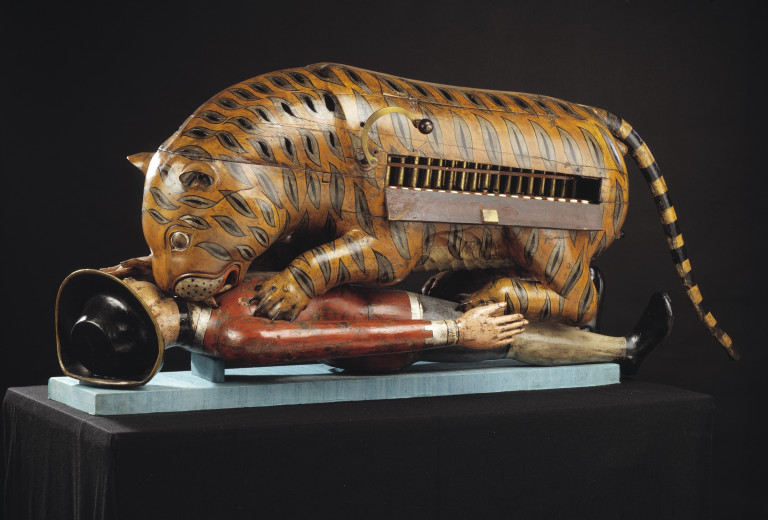The Legacy of Tipu’s Tiger
Few artifacts capture the drama and tension of empire as vividly as Tipu’s Tiger, an 18th-century automaton housed at London’s Victoria and Albert Museum. This life-sized wooden sculpture depicts a tiger sinking its teeth into a prostrate European soldier—a powerful and unsettling image of resistance. Commissioned by Tipu Sultan, the ruler of the Kingdom of Mysore, the automaton was not merely an artistic showpiece but a symbol of defiance. Tipu, known as the “Tiger of Mysore,” was one of the British East India Company’s most formidable enemies. The figure’s theatrical scene, complete with mechanical sounds and movements, illustrates the ruler’s fierce animosity toward the British. When a hand-crank is turned, the victim’s arm flails in agony, his mouth wails with distress, and the tiger emits low, menacing grunts. The automaton also features a hidden 18-note pipe organ within its flank, adding a surreal layer to an already macabre scene.
The tiger was more than an extravagant object—it was a statement of sovereignty. Tipu Sultan adopted the tiger as his personal emblem, embedding the creature into the very identity of his reign. His throne was adorned with tiger heads, and his soldiers wore “tyger” jackets into battle. His palace walls were covered with images of tigers attacking British figures. This symbolic dominance became a bitter irony after Tipu’s defeat and death in 1799 during the Fourth Anglo-Mysore War. When British forces stormed Seringapatam, they plundered Tipu’s palace, seizing treasures that symbolized the grandeur of his reign. Unlike his golden tiger-encrusted throne, which was dismantled for its precious materials, the wooden automaton had no intrinsic value, which preserved it from destruction. Instead, it was sent to England as a war trophy—a tangible reminder of Britain’s triumph over a rebellious enemy.
Once displayed in London’s East India House, Tipu’s Tiger became an immediate sensation. Visitors flocked to see the gruesome automaton, and it soon earned a reputation as both a historical curiosity and a darkly entertaining spectacle. The public delighted in cranking the handle to set the scene into motion, much to the dismay of scholars attempting to study in the same space. By the mid-19th century, however, the automaton began to fall into disrepair, partly due to the repeated tinkering by curious hands and misguided restorations. Reports describe the machine as becoming more unpredictable over time, with the organ’s tones falling out of tune and the internal bellows failing. Eventually, the crank was removed entirely to preserve the mechanism. Yet even as the machine was silenced, its story continued to resonate. The French novelist Gustave Flaubert visited London in 1851 and found himself unimpressed by the Crystal Palace but fascinated by Tipu’s Tiger. British cartoonists also satirized the tiger’s imagery, often using it to symbolize the suppression of rebellion during the 1857 Indian uprising.
Today, Tipu’s Tiger remains a symbol of complex histories: a reminder of colonial conquests, cultural resilience, and the narratives of power and subjugation. The automaton has inspired countless artistic interpretations, from poetry to sculpture. John Keats referenced the tiger in his satirical poem The Cap and Bells, while modern artists like Dhruva Mistry and M.F. Husain created works reimagining the tiger’s symbolic power. In recent years, the automaton has been featured in exhibitions that explore the entangled histories of India and Britain, such as the Victoria and Albert Museum’s “Encounters: The Meeting of Asia and Europe.” Meanwhile, in Mysore, a small replica of Tipu’s Tiger sits in Tipu Sultan’s summer palace, serving as a quiet reminder of the figure’s enduring legacy.

Despite its age and fragility, the original automaton continues to capture the imagination of visitors at the Victoria and Albert Museum. Encased in glass to protect it from further wear, it stands as one of the museum’s most iconic artifacts. Museum gift shops feature postcards and models of the tiger, underscoring its enduring popularity. Yet its legacy is not without controversy. Unlike other looted treasures, such as Tipu’s sword, Tipu’s Tiger has not been the subject of formal repatriation requests. This may reflect the complex legacy of Tipu himself—revered by some in India as a hero of resistance and viewed by others as a divisive figure. Regardless of one’s interpretation, the automaton remains a powerful reminder of an era defined by ambition, resistance, and cultural collision. It is not merely an artifact of war but a poignant symbol of a ruler’s identity and his fight to protect his kingdom from foreign dominance.
For those who stand before Tipu’s Tiger today, it is hard not to feel the weight of history. The automaton roars silently from behind its glass case, embodying a narrative far more complex than any victory or defeat. It reminds us that artifacts, much like the stories they tell, endure across time, transcending the ambitions of those who first gave them life.

Reiciendis deleniti et quasi impedit natus. Id qui repellendus iste nemo cum impedit et